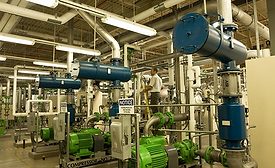Maintenance Strategies
Automation Series
How food processors can use IIOT for maintenance activities
July 1, 2019
Innovation
Virtual, augmented reality move from entertainment to maintenance
VR, AR can help decrease repair time by providing information on the spot
March 4, 2019
Maintenance
Moving CMMS to the cloud
Web-based CMMS can save money, but security must be robust
July 23, 2018
Maintenance
TPM, integrating maintenance systems and the cloud
Total productive maintenance takes PM to the next level, while integrating CMMS, EAM and ERP systems increases the level of performance of maintenance activities
July 23, 2018
Automation Series
New tools offer options for preventive maintenance
Today’s computerized maintenance management systems and enterprise asset management systems take the drudgery out of keeping track of service records, replacement parts and breakdowns.
July 11, 2018
2018 Food Automation & Manufacturing Conference and Expo
Speakers shared insights on automation and the state of the food manufacturing industry
July 9, 2018
Food Safety
How to upgrade your plant to meet food safety standards
If your plant is more than 30 years old, chances are it needs some work if it’s to meet current regulations and pass muster with food safety and customer audits
March 18, 2018
Elevate your expertise in food engineering with unparalleled insights and connections.
Get the latest industry updates tailored your way.
JOIN TODAY!Copyright ©2024. All Rights Reserved BNP Media.
Design, CMS, Hosting & Web Development :: ePublishing













